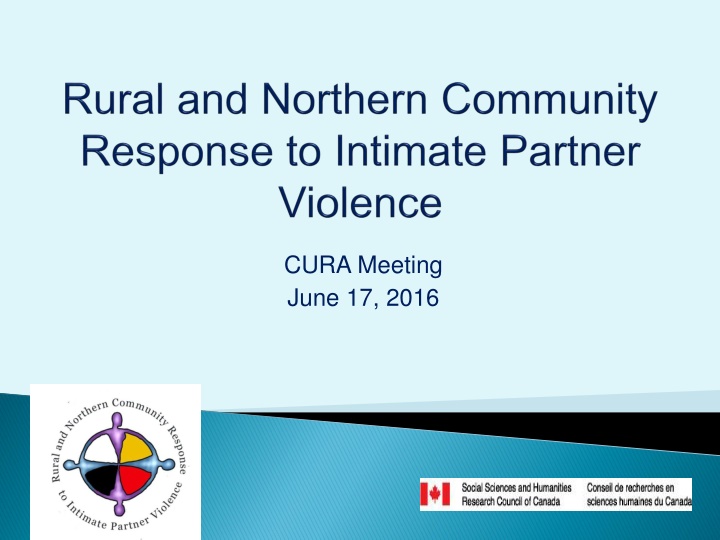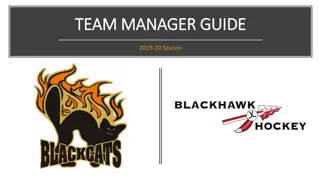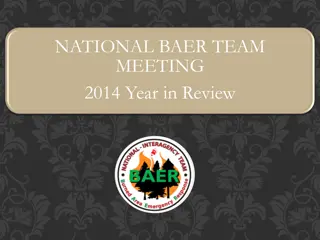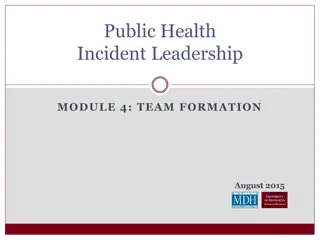
Meeting the Unique Needs of IPV Victims in Rural Prairie Provinces & NWT
This report explores the challenges faced by victims of intimate partner violence (IPV) in rural and northern regions of the Prairie Provinces and Northwest Territories in Canada. Through interviews and focus groups with diverse participants, including service providers, key barriers such as isolation, lack of resources, and systemic issues are identified. The aim is to create non-violent communities by addressing gaps in services and support for IPV victims, emphasizing safety, emotional well-being, and access to essential resources.
Download Presentation

Please find below an Image/Link to download the presentation.
The content on the website is provided AS IS for your information and personal use only. It may not be sold, licensed, or shared on other websites without obtaining consent from the author. If you encounter any issues during the download, it is possible that the publisher has removed the file from their server.
You are allowed to download the files provided on this website for personal or commercial use, subject to the condition that they are used lawfully. All files are the property of their respective owners.
The content on the website is provided AS IS for your information and personal use only. It may not be sold, licensed, or shared on other websites without obtaining consent from the author.
E N D
Presentation Transcript
CURA Meeting June 17, 2016
1. What are the unique needs of victims of IPV living in rural and northern regions of the Prairie Provinces and NWT in Canada? 2. What are the gaps [and barriers] that exist in meeting these needs? 3. How do we create non-violent communities in these regions?
32 interviews (33 participants) 29 Female 7 Aboriginal 14 telephone interviews 18 in-person interviews 3
Two-in person focus groups Two telephone focus groups Participants (n=14) 12 female 6 Aboriginal
Three focus groups Two individual interviews Participants (n=23) 22 female 3 Aboriginal
N = 70 service providers 63 Female 16 Aboriginal 19 telephone interviews 51 in-person interviews Representation from across the province
RCMP Victim Services Community Justice Shelters Women s Resource Centres Child & Family Services Nursing Family Conciliation Disability Services Education Addictions Friendship Centres Family Support Programs Counsellors/Therapists Mental Health Paramedics Healthy Child Manitoba YWCA
Safety Support Emotional Financial Housing Childcare Information Support Services Medical Services Advocacy Hope for the Future 8
Isolation/Remoteness Distance to services Transportation needs Poverty Lack of infrastructure Community politics Farming issues 9
Continued racism and discrimination Unemployment Poverty Housing conditions Addiction Hopelessness and despair Widespread unresolved grief 10
Normalized (intergenerational) Minimized Denied Intertwined with patriarchy/Christianity Women not respected Women should obey Women should not speak out Women should keep family together 11
Traditional values Closed communities Chief and Council/rural community leaders may determine access to resources and transportation
No transportation available to women (cars, taxis, local buses) Cuts in bus lines and bus schedules are barriers High costs for providing transportation Lack of funding for transportation costs for women to return home 13
Housing not available or affordable Overcrowding Homelessness Lack of transition housing Nowhere to go once she leaves shelter either go back or leave community 14
Everyone knows everyone No private places for meetings, counselling Open court; often in community hall Service providers are friends or family members 15
Lack of services or inconsistent services in rural/northern/remote areas. No shelters/safe houses or shelters not safe RCMP not in every community Services provided on scheduled basis Lack of addictions services for women Outsiders not trusted Lack of specialized services Rigid criteria for service Controlling systems Multiple system involvement with lack of coordination 16
Existing services overburdened Wait lists for service Provincial/federal funding battles Lack of services for children and youth Lack of programming for men Overall a reactive rather than proactive approach is used 17
Not adequately trained Not healthy themselves Burnout Inconsistent/inappropriate responses to women High turnover New professionals lack experience 18
Shame Pressure from him, family, community Fear of retaliation/repercussions She needs him (financial dependence, wood, water, children) Does not want to leave her community Previous negative experience her needs have not been met Oppressed no longer has the energy to react 19
Health issues Language barriers Gangs Lack of communication Farms (animals, equipment, chores) 20
Larger cultural norms and ideologies Resources are spread thin Multi-system involvement without recognition of the whole (there is a need for both IPV specific and non-specific services).
Expand/Improve Resources Increased Collaboration Education and Awareness Empower Women s Independence Creating Change Context: Address Social Challenges Community Mobilization Involve Men
IPV must be addressed in context Systemic/structural issues Eliminate hopelessness and despair 23
Education Education must target all age groups, but must start with children Must be culturally appropriate Education for immigrants In your face public education campaigns Use multi-media Informal forums for education E.g. feasts, coffee get people talking 24
Invest more resources to expand and improve services Housing is a priority More services for youth, LGBTQ community Ensure services are culturally appropriate Increase collaboration Think outside the box Harmony project Provide wrap around services Involve businesses/employers 25
Empower women to achieve hope and independence Employment preparation and training; childcare Change must occur at community level Community and community leaders/Elders need to take a stand 26
Men must be part of the solution More intervention programs for men More support for potential offenders More men need to pick up the gauntlet and take a stand. E.g. Blue Bombers Campaigns 27
Report for service providers Publications Presentations Meetings with stakeholders to influence policy and practice Work with our CURA team Keep going
2001-05 Evaluating the Justice and Community Response to Family Violence in the Prairie Provinces 2005-10 The Healing Journey 2011-16 - Rural and Northern Community Response to Intimate Partner Violence 2015-20 Canadian Domestic Homicide Prevention Initiative for Vulnerable Populations
A continuous collection of information on womens experiences of IPV. In 2001 we examined how women engage with the Justice and social service systems In 2005 we followed 665 women over 4.5 years to document their health issues, their parenting, and their sources of help and support. 2011 the Rural and Northern Community Response to Intimate Partner Violence identified the specific needs and challenges of women and service providers living in rural and remote communities. 2015 We are beginning the Canadian Domestic Homicide Prevention Initiative for Vulnerable Populations
Each study becomes a foundation for the following study Each study provides information to service providers, policy makers, and experiential women. Each study uses the information to improve programs, revise policies, and amend legislation. Each study fills in a piece of a complex puzzle how do we assist women, change violence inducing environments, build safer homes and communities.






















